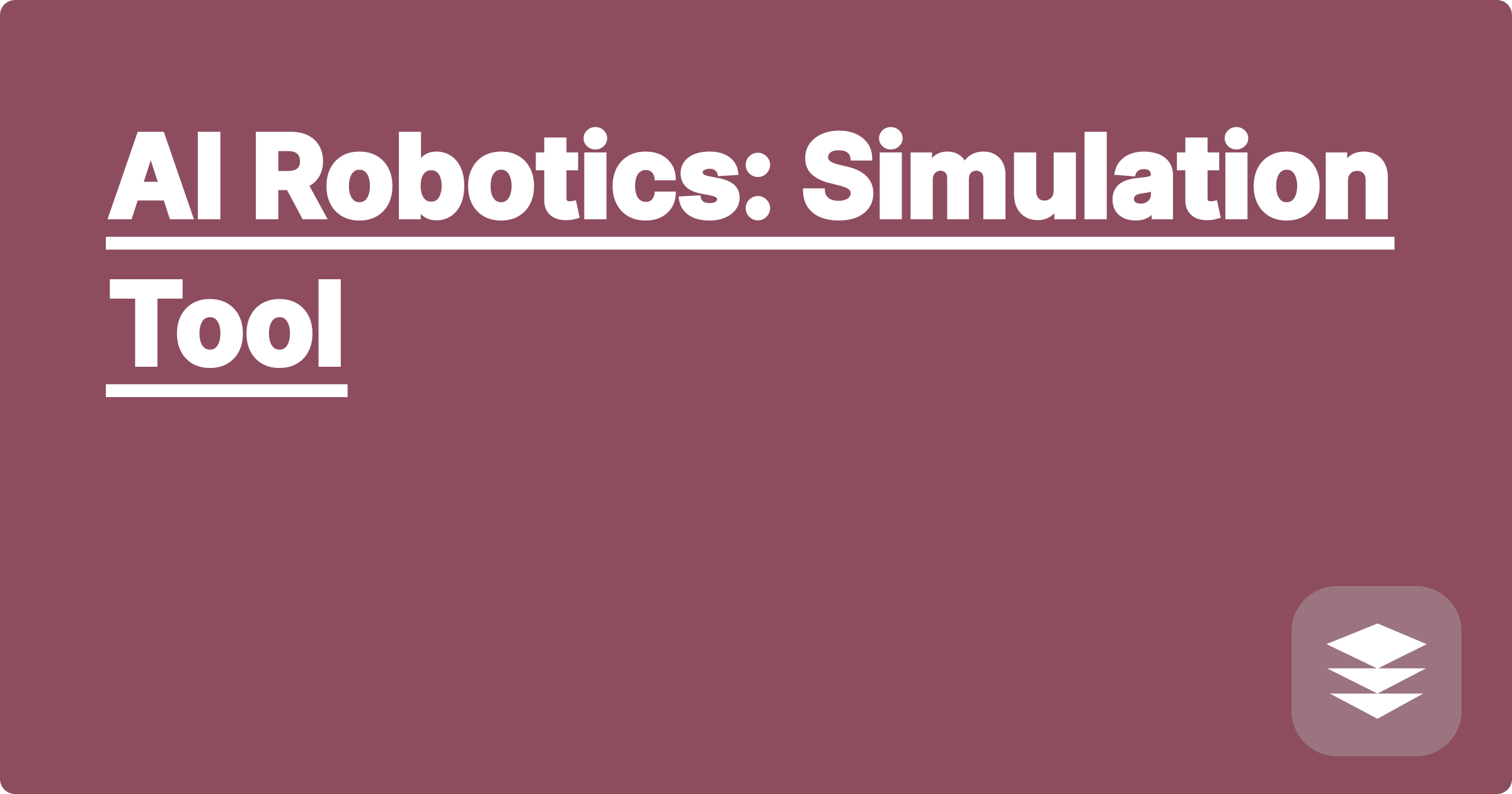
The complexities of robotics research and development present significant challenges for STEM students and researchers. Building and testing physical robots is expensive, time-consuming, and often limited by access to specialized equipment. Artificial intelligence offers a powerful solution by enabling sophisticated simulations that can accelerate the design, development, and testing of robotic systems in a virtual environment. This allows researchers to explore a wider range of designs and control algorithms without the constraints of physical hardware.
For STEM students and researchers, mastering AI-driven robotics simulation tools is crucial for staying at the forefront of innovation. These tools provide a safe and cost-effective way to experiment with complex robotic systems, learn from failures without real-world consequences, and iterate designs rapidly. Furthermore, proficiency in these tools enhances employability in a rapidly growing field with increasing demand for skilled professionals in AI and robotics. This blog post will explore how AI tools like ChatGPT, Claude, and Wolfram Alpha can be leveraged to enhance robotics simulations, providing a practical guide for academic success.
Developing robust robotic systems involves numerous challenges. One key hurdle is the accurate modeling of real-world physics within the simulation environment. Factors like gravity, friction, and collisions need to be precisely simulated to ensure the virtual robot behaves realistically. Another challenge lies in the complexity of robot control algorithms. Designing algorithms that enable robots to navigate complex environments, manipulate objects, and adapt to unforeseen circumstances requires extensive testing and refinement. Traditional simulation methods can be computationally intensive and may not accurately capture the nuances of real-world interactions, hindering the development of truly robust robotic systems.
AI tools offer a transformative approach to robotics simulation. Large language models like ChatGPT and Claude can be used to generate code for robot control algorithms, create realistic simulation scenarios, and even automate the process of testing and evaluation. For example, you can prompt ChatGPT to generate Python code for a specific robotic arm movement or ask Claude to create a simulated warehouse environment for testing a logistics robot. Wolfram Alpha can be invaluable for complex calculations related to robot kinematics, dynamics, and control. By integrating these AI tools into the simulation workflow, researchers can significantly accelerate the development process and explore a wider range of design possibilities.
Begin by defining the specific problem you want to address in your simulation. This might involve designing a robot for a particular task, optimizing an existing control algorithm, or testing the robustness of a robot in a challenging environment. Next, choose a suitable simulation platform. Several open-source and commercial options are available, such as Gazebo, PyBullet, and CoppeliaSim. Once you have selected your platform, use an AI tool like ChatGPT to generate the necessary code for your robot's control system. You can provide specific prompts like "Generate Python code for a PID controller for a two-wheeled robot." Refine the generated code within your chosen simulation environment. Then, use an AI tool like Claude to create a detailed simulation scenario. You might ask Claude to "Describe a simulated environment for a robot navigating a cluttered room." Implement this scenario within your simulation platform. Finally, run the simulation and analyze the results. Use Wolfram Alpha to perform any necessary calculations related to robot performance metrics.
Consider a scenario where you are developing a robot for navigating a maze. You can use ChatGPT to generate Python code for a wall-following algorithm. The prompt might be "Generate Python code for a robot to follow a wall using sensor data." Within your simulation environment, implement this code and simulate the robot's movement. You can then use Claude to generate different maze configurations, prompting it with requests like "Describe a complex maze with multiple dead ends." By testing your robot in various simulated mazes, you can refine its navigation algorithm and improve its performance. Wolfram Alpha can be used to calculate the robot's trajectory, speed, and other performance metrics, providing valuable insights for optimization. Another example involves simulating a robotic arm manipulating objects. You could use ChatGPT to generate code for inverse kinematics calculations, allowing the robot to reach specific target positions.
Effectively leveraging AI tools in your STEM education and research requires a strategic approach. Develop a strong understanding of the underlying principles of robotics and control theory. This foundational knowledge will enable you to critically evaluate the output of AI tools and adapt them to your specific needs. Experiment with different AI tools and platforms to find the combination that best suits your workflow. Don't hesitate to refine the prompts you give to AI tools to achieve the desired results. Iteratively refine your simulation models and control algorithms based on the results you obtain. Document your process meticulously, including the prompts you used, the generated code, and the simulation results. This will ensure reproducibility and facilitate collaboration with others. Stay updated on the latest advancements in AI and robotics to maintain a competitive edge.
To effectively integrate AI robotics simulation tools into your workflow, start by exploring the documentation and tutorials available for your chosen simulation platform and AI tools. Practice using these tools with simple examples before tackling complex projects. Engage with online communities and forums to learn from others and share your experiences. By actively exploring these resources and consistently practicing your skills, you can unlock the full potential of AI-driven robotics simulation and achieve significant advancements in your STEM education and research.
Physics Help: AI Problem Solver
Engineering AI: Design Optimization
STEM Success: AI Learning Tools
Data Science AI: Analysis Boost